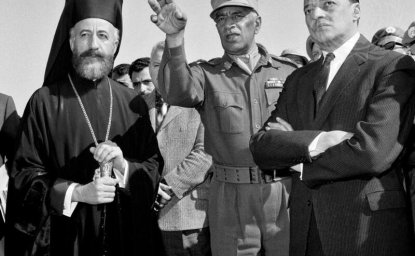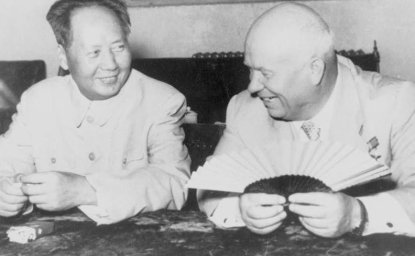The Warsaw Pact's 1964 plan for war in Europe--the most recent of only two such war plans ever released from either side of the NATO-Warsaw Pact confrontation--reaches the public domain for the first time this week on a Zurich-based website created by an innovative international consortium of scholars, the Parallel History Project on NATO and the Warsaw Pact, one of the latest initiatives co-sponsored by the Wilson Center's Cold War International History Project.
Prepared by the Soviet General Staff and found in the Czech military archives in Prague, the war plan (written in Russian) assumes an initial NATO strike quickly repulsed with a Soviet-led offensive into western Europe, as far as the Lyon area of France within nine days, and most strikingly, the routine use of nuclear weapons by both sides.
The web publication of the war plan also includes an extensive secret study prepared in 1964 by the chief of Soviet military intelligence, General Ivashutin, detailing the strategic reasoning behind the plan and Soviet thinking on nuclear weapons. It also features the only previous Soviet bloc war plan in the public domain, a 1951 document found in the Polish military archives, with commentary by Vojtech Mastny, a CWIHP senior research scholar, and other scholars.
The war plan was declassified by the Czech government, and the Ivashutin document was photocopied by the late Russian historian, General Volkogonov, from the Soviet military archives. It was located in his papers at the Library of Congress and has been translated by the Cold War International History Project.
The Soviet military doctrine, as explained by Gen. Ivashutin's study, assumed that:
- NATO's defensive preparations were a sham (p. 15)
- only a swift offensive operation could guarantee success for the Warsaw pact (pp. 24-25)
- the operation was feasible regardless of Europe's nuclear devastation (pp. 18-23)
- technically superior Soviet air defenses could destroy NATO incoming missiles before these could cause unacceptable damage (pp. 7-9)
- the Soviet Union could prevail in a war because of the West's greater vulnerability to nuclear devastation (pp. 4-5)
The documents show the shortcomings of the concept of deterrence on which the Western strategy to prevent a Soviet surprise attack was based. While they give no evidence of an intention to launch such an attach, they show how the vast buildup and growing sophistication of nuclear weapons supposedly required for deterrence encouraged the military to believe that these could be effectively used in an offensive war. The Soviet plan is eloquent testimony to this dangerous illusion.
Visit the new website at http://www.isn.ethz.ch/PHP to read the documents in the original and in English translation. The website is part of the International Relations and Security Network (ISN) operated by the Swiss Center for Security Studies and Conflict Research at ETH Zurich as a major Swiss contribution to NATO's Partnership for Peace, and is prepared in cooperation with CWIHP and the National Security Archive.

Cold War International History Project
The Cold War International History Project supports the full and prompt release of historical materials by governments on all sides of the Cold War. Read more




